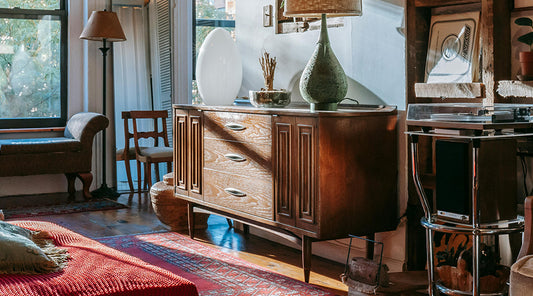How to Recognize and Evaluate Vintage Objects: A Practical Guide for Enthusiasts
Vintage objects are not just decorative pieces, but true witnesses of the past, full of history and charm. If you are an enthusiast or a collector, knowing how to recognize and evaluate a vintage object is essential. Here is a practical guide that will help you navigate the world of vintage with confidence.
What is a Vintage Object?
First, it is important to understand what is meant by "vintage." An item is considered vintage if it is at least 20 years old but no more than 100 years old. This age range distinguishes it from antiques, which must be more than a century old. Vintage items include a wide range of items, from furniture to clothing, from accessories to musical instruments, each with its own history and unique characteristics.
Recognizing a Vintage Object
1. Style and Design
Design is one of the main indicators of a vintage object. Styles change over time, and each decade has its own distinctive features. For example, the 1950s are known for their modern and colorful style, while the 1970s are distinguished by warm tones and geometric patterns. Studying the main design movements will help you identify the era of an object.
2. Materials and Finishes
The materials used in the past differ from those used today. Solid wood, sturdy metals, and natural fabrics were common in decades past. Additionally, artisanal production methods often leave characteristic marks that can help you determine the authenticity of an item.
3. Markings and Labels
Many vintage items have markings, labels, or signatures that indicate the maker or craftsman. These details can provide valuable information about the origin and age of the item. Learning to recognize and interpret these markings is essential for any collector.
Evaluating a Vintage Item
1. Condition
The condition of the item is crucial to determining its value. Well-preserved items, with no damage or minimal restoration, are worth more than damaged ones. However, some signs of wear can add character and authenticity, so evaluate carefully.
2. Rarity
Rarity is another crucial factor. Items that are produced in limited editions or have become rare over time have a higher value. Do research to understand how common or rare the item you have in your hands is.
3. Question
Market demand also affects value. Some styles and periods are more popular and sought after than others. Keep an eye on vintage market trends to understand which items are most desired at a given time.
Request an evaluation from the Dispensa Vintage Team using the appropriate form .
Tips for Buying Vintage Items
1. Do Thorough Research
Before purchasing an item, learn as much as you can about its history, manufacturer, and historical context. This will help you make more informed choices and avoid scams.
2. Check Authenticity
Be cautious with reproductions and fakes. Examine the details carefully and seek expert opinion if necessary.
3. Consider the Price
Compare prices of similar items to get an idea of market value. A price that is too low may indicate a reproduction, while a price that is too high may not be justified.
Conclusion
Recognizing and evaluating vintage objects requires time, passion and knowledge. Whether you are an expert collector or a novice, following these tips will help you make informed choices and enjoy the charm of vintage to the fullest. At Dispensa Vintage, we are here to support you in your adventure in the world of vintage objects, offering a curated and authentic selection of treasures from the past. Happy vintage hunting!










